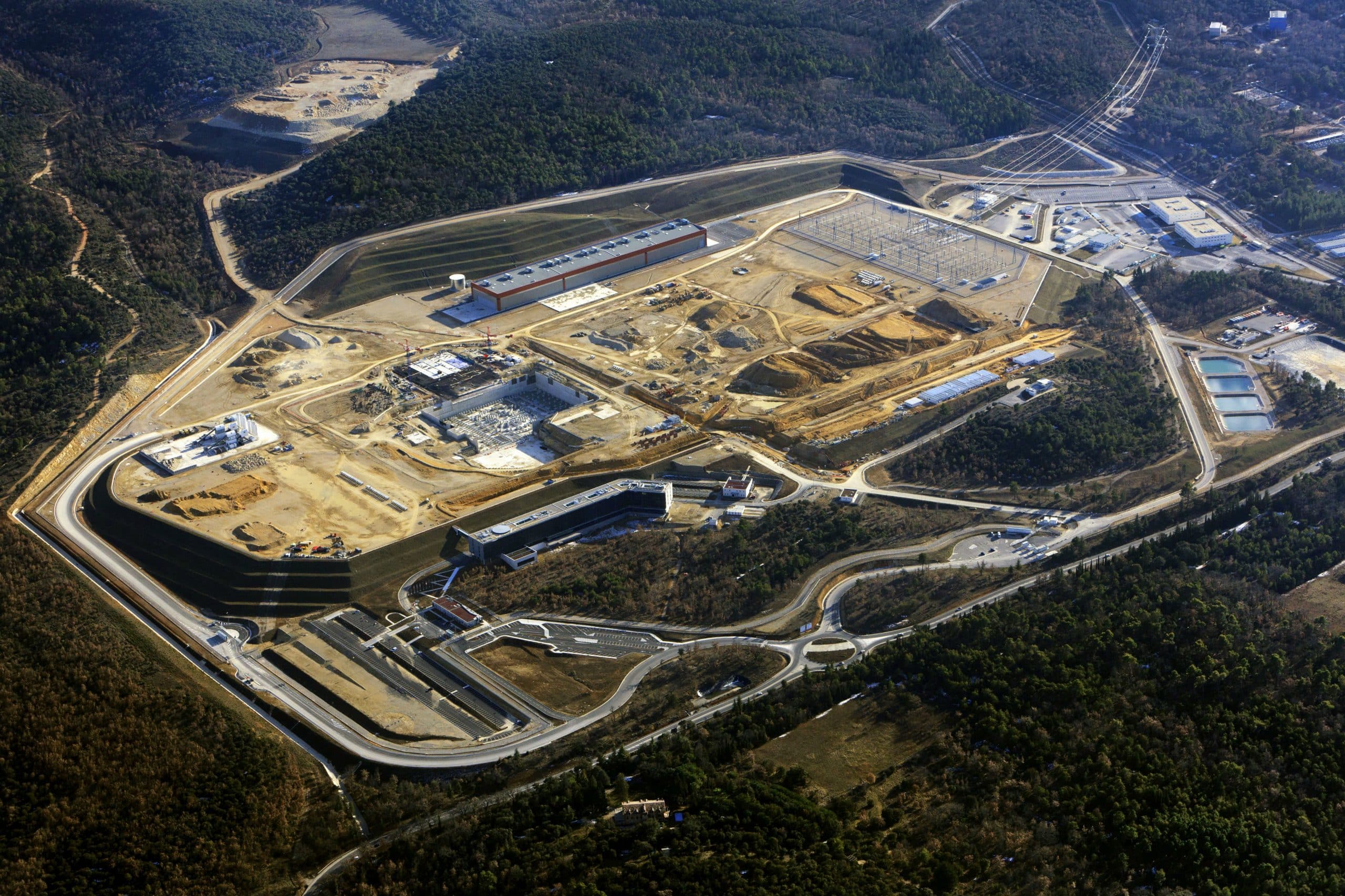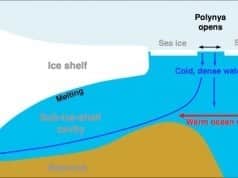Obama diverted billions of dollars of taxpayer money towards private companies, such as battery makers (bankrupt “A123″), solar makers (bankrupt “Solyandra”, cost to The People, half a billion), or luxury car makers (Tesla; bankrupt Fisker). Result? NASA can find only $600,000 for research on propulsive nuclear fusion. Why? NASA was forced to give billions to companies such as “Space X” (owned by a South African billionaire). Never mind there is no market for “Space X”.
Instead, government ought to finance only technological research that cannot bring immediate profit, from sales. Government ought to never, ever, finance for profit companies. Public money has to be saved for financing what no private company would ever finance. That Obama did not understand this is astounding. Governments should fund, and only fund, instead, big, expensive science.
ITER, the International Thermonuclear Experimental Reactor is the most valuable international science project. Ever. (The International Space Station, a good thing, pales relatively speaking, as it requires little science; there are rumors it found something unexpected recently, though. CERN is not really a project, as it’s an organization dating from the early fifties.)
Such a machine is, literally, priceless. Its real cost will be well above 20 billion, as the participating governments have to feed their research establishments to produce the required new science. In particular a whole new science of materials capable of confronting directly temperatures and pressures only found inside the sun. Just as with propulsive fusion, or maglevs, or contact free bearings, the production, control and efficiency of magnetic fields, an electronic and mathematical problem, has also to be considerably improved.
ITER will bring near infinite profits. Saving civilization may be one of them. Be it only from ITER’s diplomatic aspects ITER should be financed. All nations worth anything are funding, and collaborating in ITER, each bringing new science! This has never happened before, except at CERN, not coincidentally also on French territory. Learn, silly and offensive Senator Dianne Feinstein, learn. If your hubris allows you to!
In the preceding essay, Philosophy Feeds Engineering, I deplored that thermonuclear propulsion studies were not financed more. Some readers asked me to justify myself a bit more, here it is.
The rationale for wishing for fusion propulsion, is that, since we use, now, much more of the Earth than the Earth can provide, we have to expand in the solar System. Now.
It’s a pressing problem, a very practical solution should one want to avoid a holocaust: human population augments at the rate of 100 million a year, at this point. Thus as much as the entire Earth can support with pre-1900 technology, about 500 millions, is added every five years (500 million humans on the whole planet was passed around 1550 CE).
Some will sneer that they don’t see what’s out there in space that we can use. Sure, as we have not been out there. Clearly, with energy at will, Mars could be colonized right away. And even the Moon, as there is water there, in the rocks, so oxygen could be obtained. Again, if we had a plentiful energy source.
We can’t expand through the solar system with chemistry (that is, by burning stuff), as the energy production of that prehistoric method is barely enough to send robots to planet. And even then: a successor to the Curiosity Rover won’t happen before 2020, because, although the demand is great, it’s too expensive, and we have run out of Plutonium generators, so we simply do not have the energy source for a new rover! (I hope the rabid anti-nuclear lobby is satisfied!)
However, there is the energy of the sun, thermonuclear fusion, and we know how it works. Much of the science is here. Can the engineering follow?
Old Geezer Pilot, a faithful commenter on this site, loves the photovoltaic effect and he reminds us that: “Fusion is just 20 years away. And it always has been.”
That’s an old joke, always good to hear. However, it’s getting a bit too long in the tooth. Indeed, two points:
a) the photovoltaic effect was discovered by an obscure Frenchman, Alexandre Edmond Becquerel in1839. It took about 150 years to make the PV effect able to produce electricity economically.
b) the Joint European Torus, the JET, in the UK, achieved, with its Tokamak design, not just thermonuclear ignition, but break-even (or so), producing nearly as much energy through fusion as was put in to confine the plasma and heat it up. That was in the 1990s. (Tokamak is from the Russian for toroidal kamera aksial; the great Andrei Sakharov got the idea of the toroidal chamber with an axial magnetic field.) Since then tremendous progress has been made.
ITER is supposed to produce ten times the energy put in.
Tokamak designs aim to put the sun in a box. A tall order. Have the sun turn around in a torus, as a magnetically controlled plasma, never touching the walls. It’s ambitious. Maybe too ambitious.
The first problem is to confine magnetically the 100 million degrees Celsius plasma, so that it does not touch the walls. Initially, plasma could be confined for only a fraction of a second. But, in the last decade, a Tokamak in France at Cadarache, where ITER is built, achieved around ten minutes of confinement. After some subtle computations by a woman mathematician uncovered new tricks for stabilizing a plasma.
Plasma are the fourth state of matter, beyond gas, liquid and solid. Stars are made of plasmas. It’s not like we don’t need to know about plasmas. Sometimes, stars blow up. The French Corot satellite found that most stars are much more unstable than the sun. (This discovery could lead to very practical applications, say in the search for extraterrestrial life, or just Sol surveillance.)
Other designs for thermonuclear fusion than the tokamak, are imaginable, or have been achieved. No, this is not a joke about “cold fusion”.
Electrostatic thermonuclear fusion machines do exist and are for sale. In them a beam of particles is shot into a thermonuclear fuel target, fusion is achieved. They generate copious amounts of neutrons (that’s why people buy them).
https://nsd-fusion.com/
The lack of success of the presently governmentally financed fusion efforts has been caused from their very ambition, in particular the necessity to avoid contact with plasma and to handle waste. something that is irrelevant in space.
A few years back, the confinement of the Tokamak at Princeton failed catastrophically for a second, or so. The plasma touched the wall, or something. The machine is 10,000 metric tons (heavier than the Eifel Tower). It jerked up by a foot.
10,000 tons, jumping. Fusion is mighty.
The scheme for fusion as propulsion is a variant of a system long proposed to achieve energy production. The idea was to use some material to crush fusion fuel (Deuterium and, maybe, also Tritium), to the point temperatures and pressures similar to those of the sun would be achieved.
This is how a so called thermonuclear bomb works. In such a bomb, the enormous pressure of the electromagnetic blast from a fission bomb is used to compress a so called tamper that surrounds a mantle made of thermonuclear fuel with a plutonium fission core. The tamper gathers heat and kinetic energy, and, in turn, compresses its interior to sun like conditions.
In a nuclear bomb, the tamper participates to energy generation: if made out of U238, it fissions. That, however, generates nasty radioactive waste.
Thus, the main problem of controlled thermonuclear fusion has been, what do you do with the crushing mechanism, once it has become some sort of obnoxious plasma?
In a so called fusion bomb, the crushing mechanism, which is crucial, can either be made of lead (to reduce yield), or U238 (to augment yield, by supplementary fission).
Then how come the usage of lasers to ignite a pellet has, so far, failed to achieve ignition? (Differently from the tokamaks which do this routinely.) Because, precisely, in this NIF, the National Ignition Facility, there is not much of a crushing mechanism. Instead light is asked, directly, to crush. But light is made of bosons, particles that like to pile up at the same place, they don’t crush very well.
In the rocket engine, the crushing mechanism becomes ejected fuel. Presto, no more waste. So I think it should work.
Why having fusion obsession as a moral order? We don’t want to do like the Romans, and wake up some day, out of energy to do what needs to be done. Going to Mars. Among other things.
Just like the Romans had to go to Eastern Europe, to find the metals they needed. But they never made it there, because, the one and only time, the entire Roman army was ready, capable and determined to make it there, its imperator was assassinated.
His name was Julius Caesar.
Never again would a Roman army be capable of that mission. Eastern Europe would turn into Rome’s Achilles Heel. In several ways. Those romanized Germans, the Franks, were fully aware that progress of law, order and civilization had to cover all of Europe, so, as soon as 407 CE, they fought as the old republican Romans used to, and conquered Eastern Europe by the 8C.
After this not so accidental happenstance of history, the assassination of the transgender Caesar, the hostile attitude of emperors to any sort of new adventures, especially in all aspects of the mind (hence technology) insured debilitating degeneracy. That’s why the initiative of plutophile senator Feinstein (Demoncrat, California) to defund the modest USA contribution to ITER should be seen for what it is. Rage against the progress of understanding. Rage against progress: an attempt to spoil our only chance.
Either we will master fusion, and will go beyond prehistory, or civilization, just as unable to hold together as a nucleus with too many nucleons, will fission.
Patrice Ayme
P/S: Some will say that we can just do with PhotoVoltaics. Not true. However the fusion propulsion project will use PV to create the electrical power it needs. So, as fusion products don’t fission (having too few nucleons), fusion propulsion will be very clean, allowing to use it even in low orbit. Add this to the space elevator, and we have our access to space, cheap, easy and safe.






